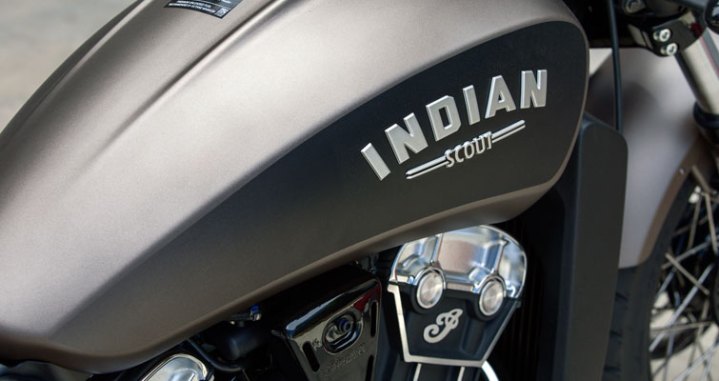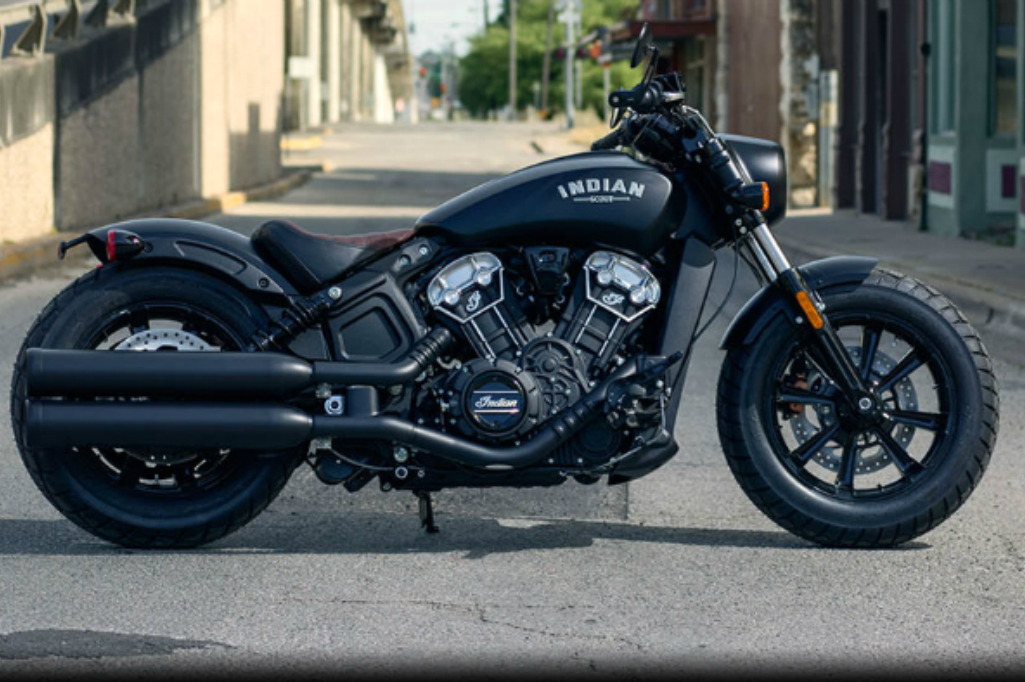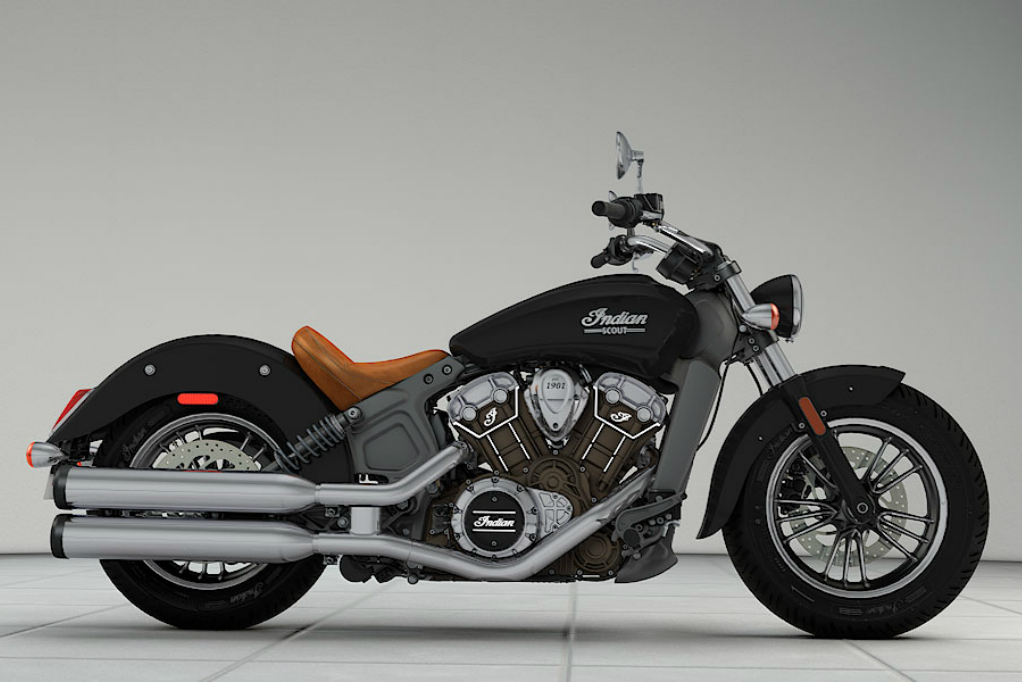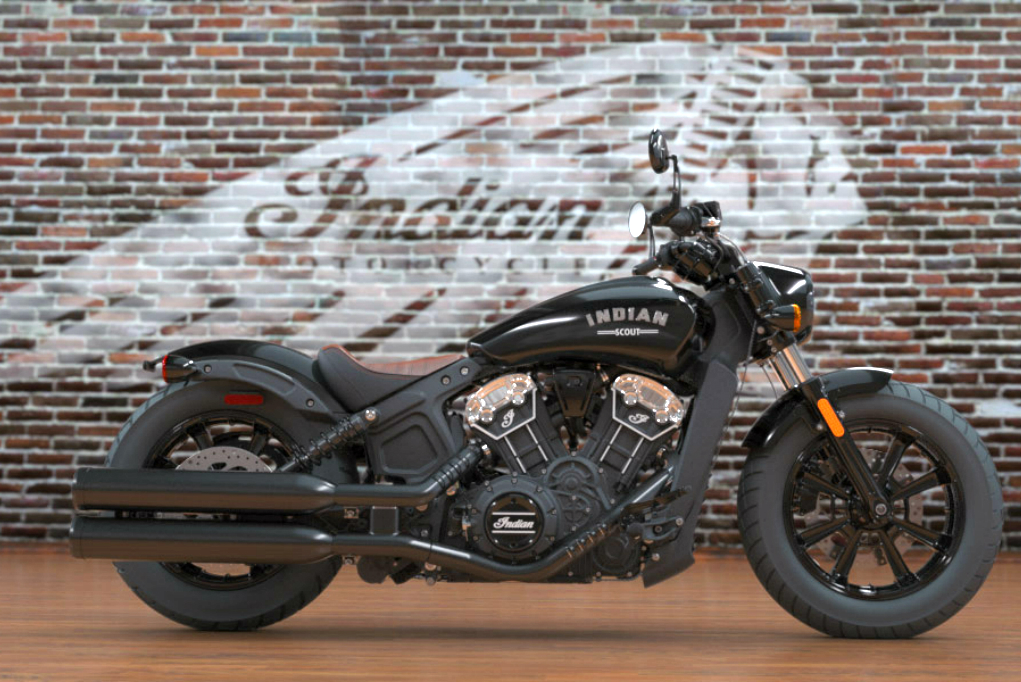Stripped down cruiser morphs into bar hopper. Indian Motorcycle’s (IMC’s) latest bike reaches back in the brand’s history to move forward with new technology and focus on a new niche. Indian threw a big launch party in Minneapolis on July 14, 2017 to introduce the 2018 Indian Scout Bobber, IMC’s new urban assault bike.
Since Indian re-entered the motorcycle market in 2014, the brand has been associated with big touring bikes and cruisers with saddlebags and windshields. You can even accessorize Indian’s “midsized” 1133cc Scout and 999cc Scout Sixty with bags and shields on the IMC website.
The Scout Bobber is a steel horse with a different soul. The Bobber’s accessories list includes a pair of very small saddlebags (not big enough for a laptop) but no wind protection. This isn’t the bike you’d think of first for a long trip, as Indian already has plenty of those.
The Scout Bobber is in some respects reminiscent of the original 1920 Indian Scout, stripped to the bone. To build a bobber version of the existing, modern day Scout, Indian’s designers started by removing every unnecessary part. Whenever possible the essential parts left were cut back in size. The team kept the Scout’s liquid cooling, disc brakes, and 1133cc, 100-hp V-Twin engine with six-speed transmission.
The stripped-down Scout Bobber’s rear suspension is one inch lower, the front and rear fenders are chopped off leaving just enough to divert off-road spray, and the rider footpegs are pulled back 1.5 inches.
A low-slung leather seat in brown and black, street tracker low-profile handlebars, and bar-end mirrors that can be positioned above or below the bars bring the rider closer to the bike. The bike rides on black cast aluminum 16-inch wheels front and back. The tires have an aggressive, blocky tread.
Stripped down and blacked out are the order of the day for the Scout Bobber. Indian blacked out the bike’s frame, cooling system, exhaust, primary and clutch covers, handlebars, headlight nacelle, mirrors, and even the gauge face.
The Indian’s new street brawler has slotted exhaust shields and belt guard, a smaller ignition and thermostat cover, an LED rear brake light and turn signals, and a side-mounted license plate bracket.
Indian product designers told Digital Trends they thought long and hard before adding a new logo design element to the storied brand before adding a new blocky font tank-badge.

On a half-day press ride through Minnesota farm country, small towns, highway, and downtown Minneapolis, the Scout Bobber was easy to handle and pulled hard when asked. The sweet engine’s torque peaks at 72-foot-pounds at 6,000 rpm, but the experience in third through sixth gears is that all the power you could ask for is right there regardless of the gear you’re in.
I rode the Bobber with ABS brakes which grabbed quickly and surely during the ride. Despite the bike’s 554-wet weight with fuel and fluids, all that was needed when a city bus moved into my lane was a quick mirror check, a slight lean to the left and a bare throttle twist and we were ahead of the bus in the left lane without commotion or drama.
With its 25.6-inch solo seat height, reaching the ground with both feet flat is easy even for medium-height riders. Optional matching leather passenger seat with or without a butt stop and passenger foot pegs let you go two-up should you choose.
The 2018 Indian Scout Bobber will be available in September 2017 but Indian dealerships can take pre-orders now. Starting prices depend on color and automatic braking system (ABS). Available colors include Thunder Black ($11,500); Star Silver Smoke, Bronze Smoke, or Indian Motorcycle Red ($12,000); and Thunder Black Smoke, the only color available with ABS ($12,500).








